Near-Nyquist-Limit Optical Communication and Ranging Method Based on Waveform Matched PPM
Abstract
:1. Introduction
2. Deep-Space Optical Communication and Ranging Method Based on PPM
2.1. System Structure
2.2. Ranging Method
3. PPM Symbol Decision Algorithm Based on Waveform Matching
| Algorithm 1 Waveform matched PPM symbol decision algorithm. |
| Input: received signal samples Initialization:, PPM pulse slot time-domain model
|
4. Simulation Results
4.1. Ranging Accuracy
4.2. Bit Error Rate
5. Experimental Results
6. Conclusions
Author Contributions
Funding
Conflicts of Interest
References
- Yu, G. Application and trend of model-based systems engineering methods for deep space exploration mission. J. Deep. Space Explor. 2021, 8, 407–415. [Google Scholar]
- Malik, S.; Sahu, P.K. Performance analysis of free space optical communication system using different modulation schemes over weak to strong atmospheric turbulence channels. In Optical and Wireless Technologies; Springer: Berlin/Heidelberg, Germany, 2020; Volume 546, pp. 387–399. [Google Scholar]
- Chen, J.; Huang, Y.; Cai, R.; Zheng, A.; Yu, Z.; Wang, T.; Liu, Z.; Gao, S. Free-space communication turbulence compensation by optical phase conjugation. IEEE Photonics J. 2020, 12, 1–11. [Google Scholar] [CrossRef]
- Li, R.; Chen, T.; Fan, L.; Dang, A. Performance analysis of a multiuser dual-hop amplify-and-forward relay system with FSO/RF links. J. Opt. Commun. Netw. 2019, 11, 362–370. [Google Scholar] [CrossRef]
- Toyoshima, M. Recent trends in space laser communications for small satellites and constellations. J. Light. Technol. 2020, 39, 693–699. [Google Scholar] [CrossRef]
- Wu, W.; Chen, M.; Zhang, Z.; Liu, X.; Dong, Y. Overview of deep space laser communication. Sci. China Inf. Sci. 2018, 61, 1–12. [Google Scholar] [CrossRef]
- An, J.; Zhang, Y.; Gao, X.; Yang, K. Energy-Efficient Base Station Association and Beamforming for Multi-Cell Multiuser Systems. IEEE Trans. Wirel. Commun. 2020, 19, 2841–2854. [Google Scholar] [CrossRef]
- Araki, K.; Arimoto, Y.; Shikatani, M.; Toyoda, M.; Toyoshima, M.; Takahashi, T.; Kanda, S.; Shiratama, K. Performance evaluation of laser communication equipment onboard the ETS-VI satellite. In Free-Space Laser Communication Technologies VIII. International Society for Optics and Photonics; SPIE: Bellingham, WA, USA, 1996; Volume 2699, pp. 52–59. [Google Scholar]
- Tolker-Nielsen, T.; Oppenhauser, G. In-orbit test result of an operational optical intersatellite link between ARTEMIS and SPOT4, SILEX. In Free-Space Laser Communication Technologies XIV. International Society for Optics and Photonics; SPIE: Bellingham, WA, USA, 2002; Volume 4635, pp. 1–15. [Google Scholar]
- Jono, T.; Takayama, Y.; Shiratama, K.; Mase, I.; Demelenne, B.; Sodnik, Z.; Bird, A.; Toyoshima, M.; Kunimori, H.; Giggenbach, D.; et al. Overview of the inter-orbit and the orbit-to-ground laser communication demonstration by OICETS. In Free-Space Laser Communication Technologies XIX and Atmospheric Propagation of Electromagnetic Waves. International Society for Optics and Photonics; SPIE: Bellingham, WA, USA, 2007; Volume 6457, p. 645702. [Google Scholar]
- Fields, R.; Lunde, C.; Wong, R.; Wicker, J.; Kozlowski, D.; Jordan, J.; Hansen, B.; Muehlnikel, G.; Scheel, W.; Sterr, U.; et al. NFIRE-to-TerraSAR-X laser communication results: Satellite pointing, disturbances, and other attributes consistent with successful performance. In Sensors and Systems for Space Applications III. International Society for Optics and Photonics; SPIE: Bellingham, WA, USA, 2009; Volume 7330, p. 73300Q. [Google Scholar]
- Grigoryev, V.; Kovalev, V.; Shargorodskiy, V.; Sumerin, V. High-bit-rate laser space communication technology and results of on-board experiment. In Proceedings of the International Conference on Space Optics, Kobe, Japan, 7–9 May 2014; Volume 7685, pp. 1–3. [Google Scholar]
- Boroson, D.M.; Robinson, B.S.; Murphy, D.V. Overview and results of the lunar laser communication demonstration. In Free-Space Laser Communication and Atmospheric Propagation XXVI. International Society for Optics and Photonics; SPIE: Bellingham, WA, USA, 2014; Volume 8971, p. 89710S. [Google Scholar]
- Chen, W.; Sun, J.; Hou, X.; Zhu, R.; Hou, P.; Yang, Y.; Gao, M.; Lei, L.; Xie, K.; Huang, M.; et al. 5.12 Gbps optical communication link between LEO satellite and ground station. In Proceedings of the 2017 IEEE International Conference on Space Optical Systems and Applications (ICSOS), Naha, Japan, 14–16 November 2017; pp. 260–263. [Google Scholar]
- Hauschildt, H.; Garat, F.; Greus, H.; Kably, K.; Lejault, J.; Ludwig Moeller, H.; Murrell, A.; Perdigues, J.; Witting, M. European data relay system–one year to go! In Proceedings of the International Conference on Space Optical Systems and Applications (ICSOS). Kobe, Japan, 7–9 May 2014; Volume 2014. [Google Scholar]
- Calzolaio, D.; Curreli, F.; Duncan, J.; Moorhouse, A.; Perez, G.; Voegt, S. EDRS-C—The second node of the European data relay system is in orbit. Acta Astronaut. 2020, 177, 537–544. [Google Scholar] [CrossRef]
- Hauschildt, H.; le Gallou, N.; Mezzasoma, S.; Moeller, H.L.; Armengol, J.P.; Witting, M.; Herrmann, J.; Carmona, C. Global quasi-real-time-services back to Europe: EDRS Global. In Proceedings of the International Conference on Space Optics—ICSO 2018. International Society for Optics and Photonics, Chania, Greece, 12 October 2018; Volume 11180, p. 111800X. [Google Scholar]
- Munemasa, Y.; Saito, Y.; Carrasco-Casado, A.; Kolev, D.R.; Trinh, P.V.; Takenaka, H.; Suzuki, K. Advanced demonstration plans of high-speed laser communication “HICALI” mission onboard the engineering test satellite 9. In Proceedings of the Advances in Communications Satellite Systems. Proceedings of the 37th International Communications Satellite Systems Conference (ICSSC-2019); Okinawa, Japan, 29 October–1 November 2019, pp. 1–7.
- Maalej, M.; Besbes, H. Performance of free space optical communication system based on M-ary PPM modulation over double generalized gamma channel. China Commun. 2020, 17, 19–30. [Google Scholar] [CrossRef]
- Xu, G. Error performance of deep space optical communication with M-ary pulse position modulation over coronal turbulence channels. Opt. express 2019, 27, 13344–13356. [Google Scholar] [CrossRef]
- Noshad, M.; Brandt-Pearce, M. Expurgated PPM using symmetric balanced incomplete block designs. IEEE Commun. Lett. 2012, 16, 968–971. [Google Scholar] [CrossRef]
- Tao, M.; Guan, J.; Peng, T.; Li, S.; Yu, S.; Song, J.; Song, Z.; Gao, L.; Gao, F. Simultaneous realization of laser ranging and communication based on dual-pulse interval modulation. IEEE Trans. Instrum. Meas. 2021, 70, 1–10. [Google Scholar] [CrossRef]
- You, L. Superconducting nanowire single-photon detectors for quantum information. Nanophotonics 2020, 9, 2673–2692. [Google Scholar] [CrossRef]
- Li, X.; Tan, J.; Zheng, K.; Zhang, L.; Zhang, L.; He, W.; Huang, P.; Li, H.; Zhang, B.; Chen, Q.; et al. Enhanced photon communication through Bayesian estimation with an SNSPD array. Photonics Res. 2020, 8, 637–641. [Google Scholar] [CrossRef]
- Sarbazi, E.; Safari, M.; Haas, H. The bit error performance and information transfer rate of SPAD array optical receivers. IEEE Trans. Commun. 2020, 68, 5689–5705. [Google Scholar] [CrossRef]
- Koziy, A.A.; Losev, A.; Zavodilenko, V.V.; Kurochkin, Y.V.; Gorbatsevich, A.A. Modern methods of detecting single photons and their application in quantum communications. Quantum Electron. 2021, 51, 655. [Google Scholar] [CrossRef]
- Ren, X.; Xu, B.; Fei, Q.; Liang, Y.; Ge, J.; Wang, X.; Huang, K.; Yan, M.; Zeng, H. Single-photon counting laser ranging with optical frequency combs. IEEE Photonics Technol. Lett. 2020, 33, 27–30. [Google Scholar] [CrossRef]
- Djordjevic, I.B. Multidimensional pulse-position coded-modulation for deep-space optical communication. IEEE Photonics Technol. Lett. 2011, 23, 1355–1357. [Google Scholar] [CrossRef]
- Kosman, J.; Moore, K.; Haas, H.; Henderson, R.K. Distortion losses of high-speed single-photon avalanche diode optical receivers approaching quantum sensitivity. Philos. Trans. R. Soc. A 2020, 378, 20190194. [Google Scholar] [CrossRef] [Green Version]
- Meng, X.; Cunningham, D.G.; White, I.H.; Penty, R.V. SPAD-Array contention signal and noise model suitable for multilevel modulation schemes with signal processing. IEEE Access 2021, 9, 48483–48500. [Google Scholar] [CrossRef]
- Li, B.; Liu, Y.; Tong, S.; Zhang, L.; Yao, H. BER analysis of a deep space optical communication system based on SNSPD over double generalized gamma channel. IEEE Photonics J. 2018, 10, 1–7. [Google Scholar] [CrossRef]
- Ivanov, H.; Leitgeb, E.; Pezzei, P.; Freiberger, G. Experimental characterization of SNSPD receiver technology for deep space FSO under laboratory testbed conditions. Optik 2019, 195, 163101. [Google Scholar] [CrossRef]
- Wen, G.; Huang, J.; Dai, J.; Zhang, L.; Wang, J. Performance analysis optimization and experimental verification of a photon-counting communication system based on non-photon-number-resolution detectors. Opt. Commun. 2020, 468, 125771. [Google Scholar] [CrossRef]
- Handura, M.; Ndjavera, K.; Nyirenda, C.; Olwal, T. Determining the feasibility of free space optical communication in Namibia. Opt. Commun. 2016, 366, 425–430. [Google Scholar] [CrossRef]


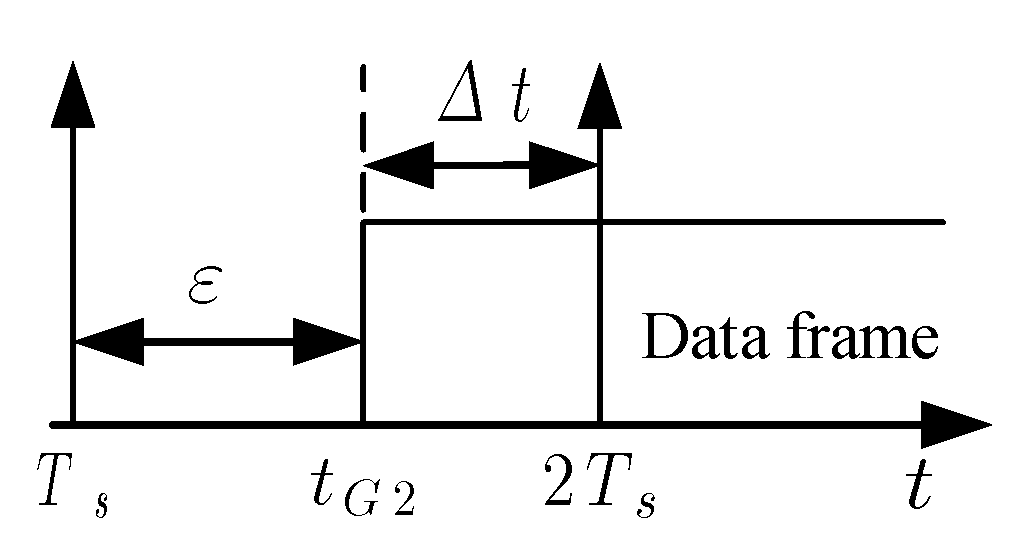


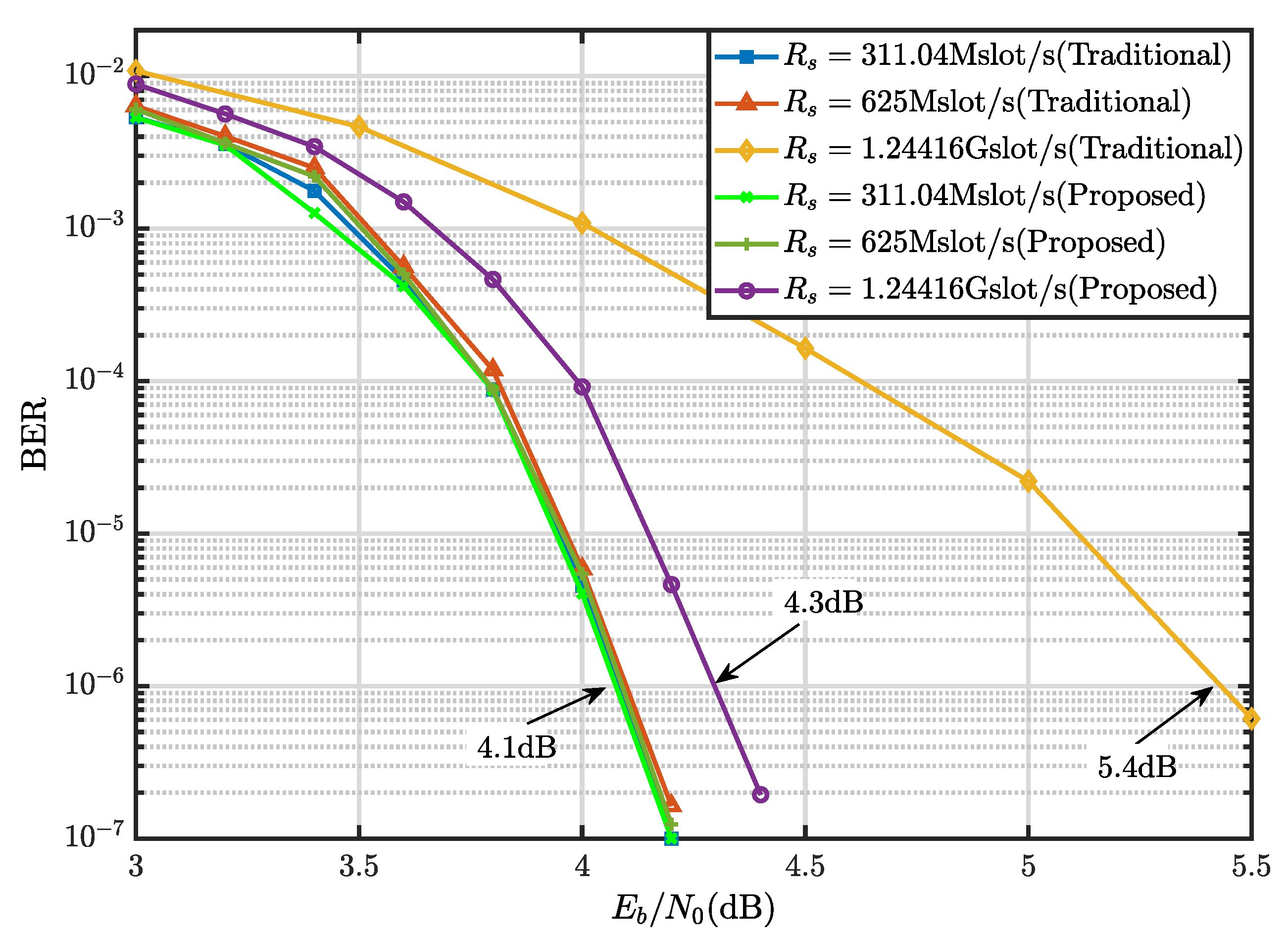
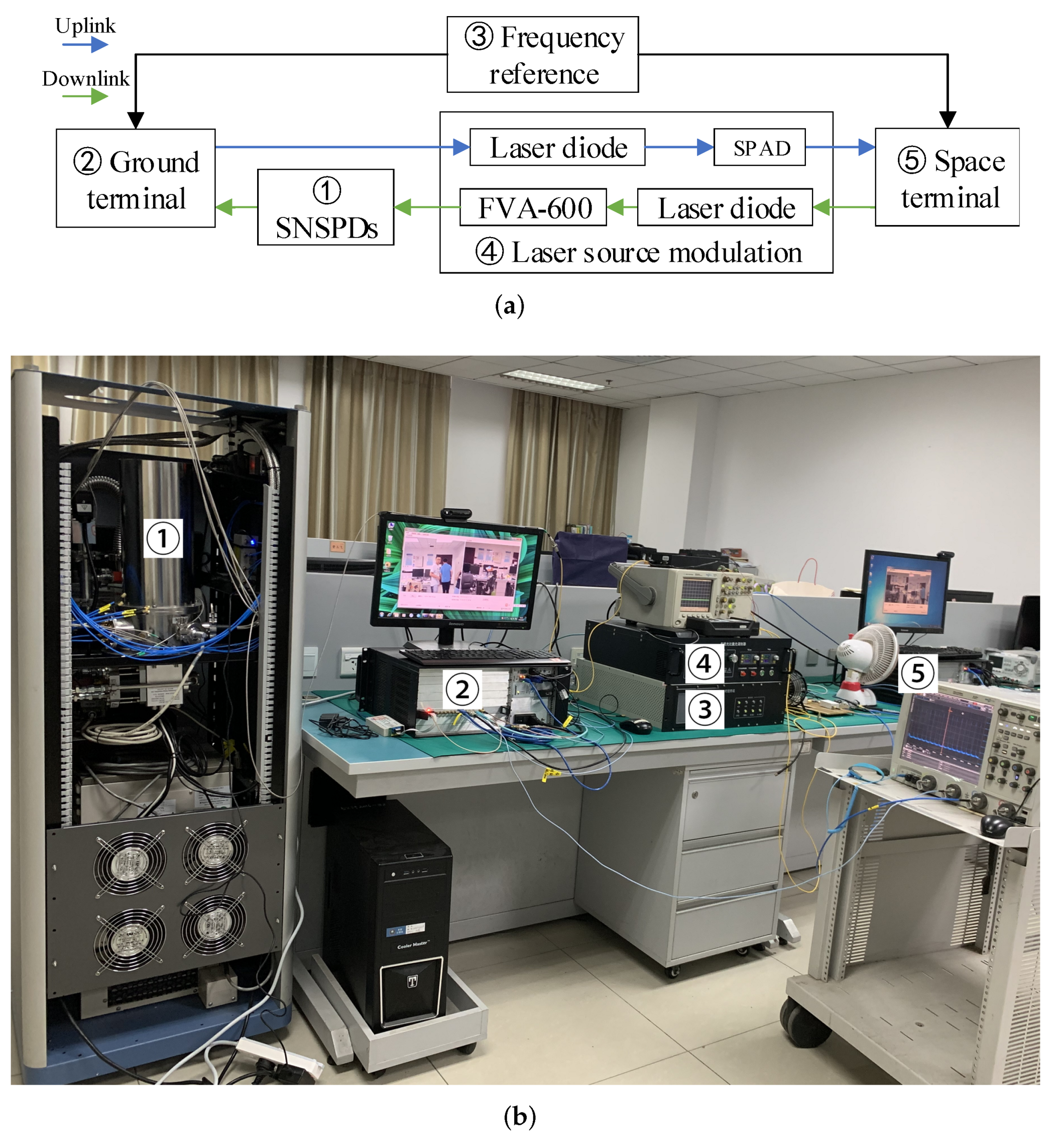
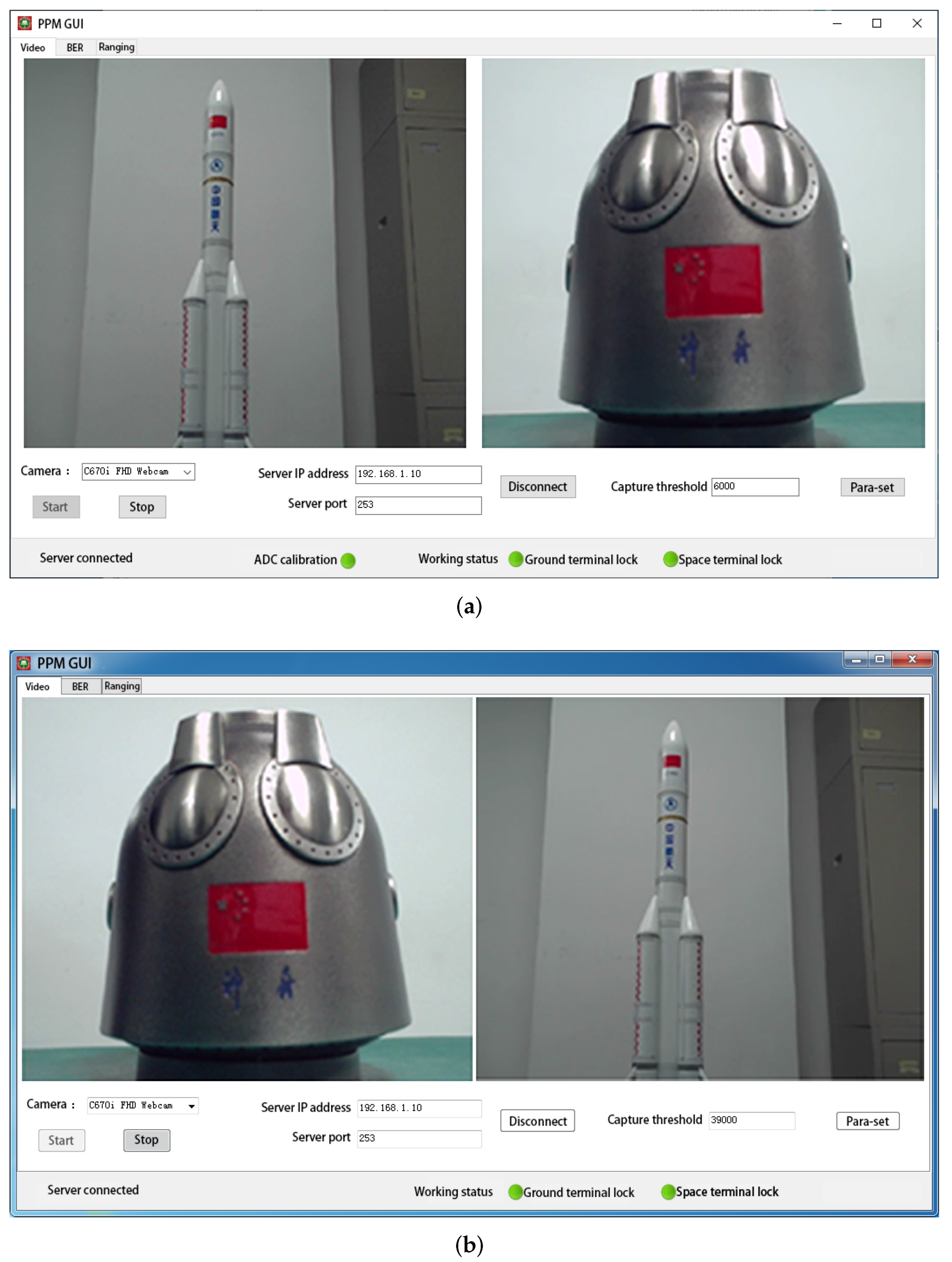
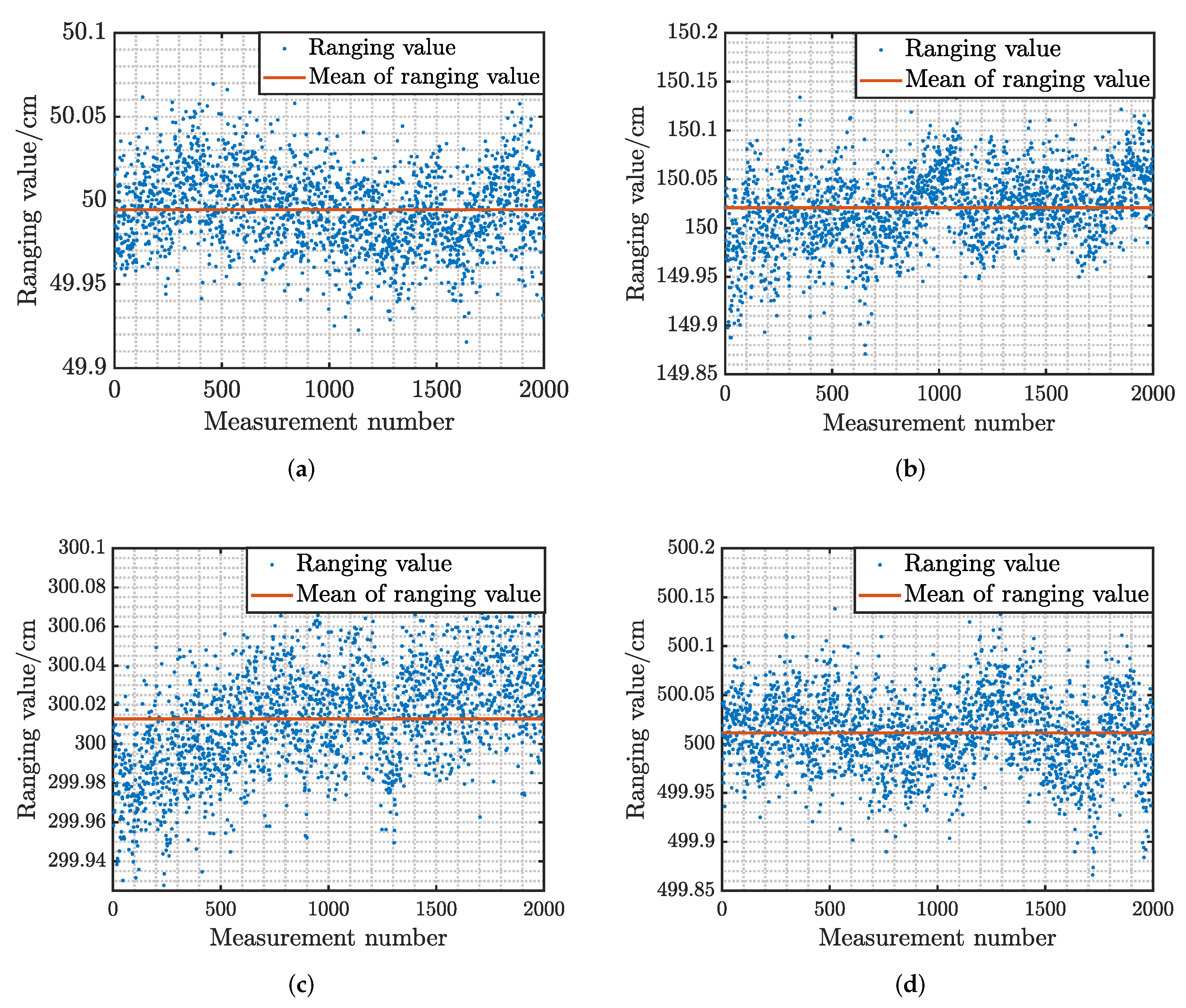
| True Distance/cm | 50 | 150 | 300 | 500 |
|---|---|---|---|---|
| Mean of ranging value/cm | 49.995 | 150.021 | 300.013 | 500.011 |
| RMSE/mm | 0.23 | 0.37 | 0.27 | 0.38 |
Publisher’s Note: MDPI stays neutral with regard to jurisdictional claims in published maps and institutional affiliations. |
© 2022 by the authors. Licensee MDPI, Basel, Switzerland. This article is an open access article distributed under the terms and conditions of the Creative Commons Attribution (CC BY) license (https://creativecommons.org/licenses/by/4.0/).
Share and Cite
Hu, C.; Lin, Y.; Li, J.; Bu, X.; An, J. Near-Nyquist-Limit Optical Communication and Ranging Method Based on Waveform Matched PPM. Electronics 2022, 11, 565. https://doi.org/10.3390/electronics11040565
Hu C, Lin Y, Li J, Bu X, An J. Near-Nyquist-Limit Optical Communication and Ranging Method Based on Waveform Matched PPM. Electronics. 2022; 11(4):565. https://doi.org/10.3390/electronics11040565
Chicago/Turabian StyleHu, Chunyuan, Yujie Lin, Jianguo Li, Xiangyuan Bu, and Jianping An. 2022. "Near-Nyquist-Limit Optical Communication and Ranging Method Based on Waveform Matched PPM" Electronics 11, no. 4: 565. https://doi.org/10.3390/electronics11040565







